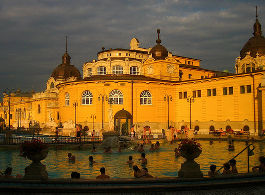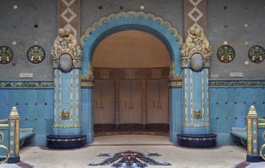Traditional Hungarian Instruments: Cimbalom, Magyar Pipe & Doromb in Action
There is a wide range of traditional Hungarian musical instruments, from simple ones like the ‘doromb‘ to more complicated ones like the concert cimbalom (or cymbalom) and the Hungarian bagpipe called Magyar Pipe. See these instruments in action in the following song performed by Bea Palya and her Quintet – the host of the show says a few introductory words and then the music starts. You will see interactive hotspots that give you extra info on the instruments and the musicians (click on the hotspots).
If you want to take away a special musical souvenir from Hungary, try to find a ‘doromb’ or Jew’s harp: although it is one of the oldest instruments in the world and has its own regional variations, it can be a nice present to give a Hungarian one. It is small, decorative, little challenge to play with, has a funny cartoon-like sound (as if Bunnies jumping around), and is more than thousands years old. Here’s a doromb-maker’s product show (different harp for different pitches).
The shape of a doromb is like a horseshoe – it has an iron (or reed) frame and a thin middle part, which acts like a gentle spring. You must place the ‘horseshoe’ in your mouth (be careful with your teeth!) and string the spring while crooning. The origin of doromb may go back to Central Asia (more on the mouth harp: Michael Wright). The smaller the doromb, the louder it is, so go for the smaller ones. Doromb is often used in Hungarian folk songs, and there are special Doromb Festivals in Hungary too.








